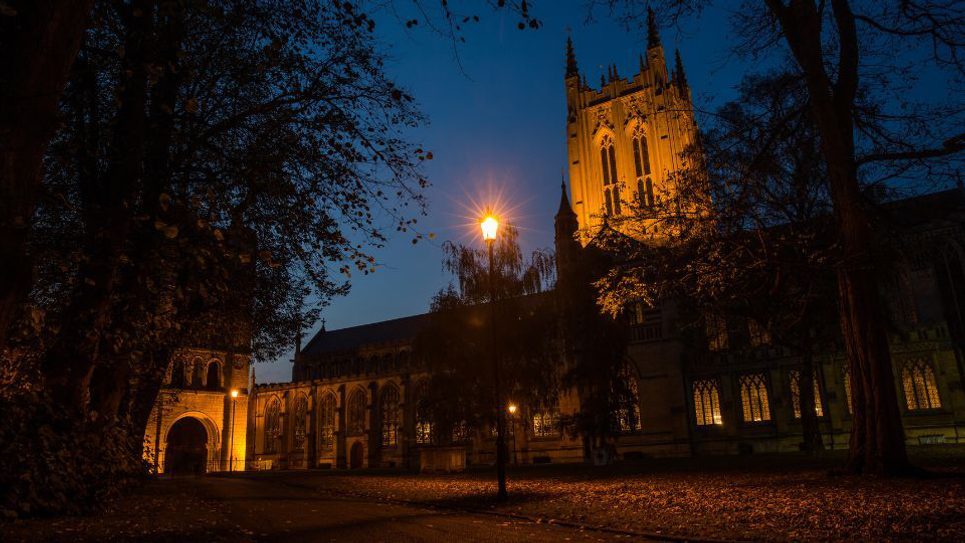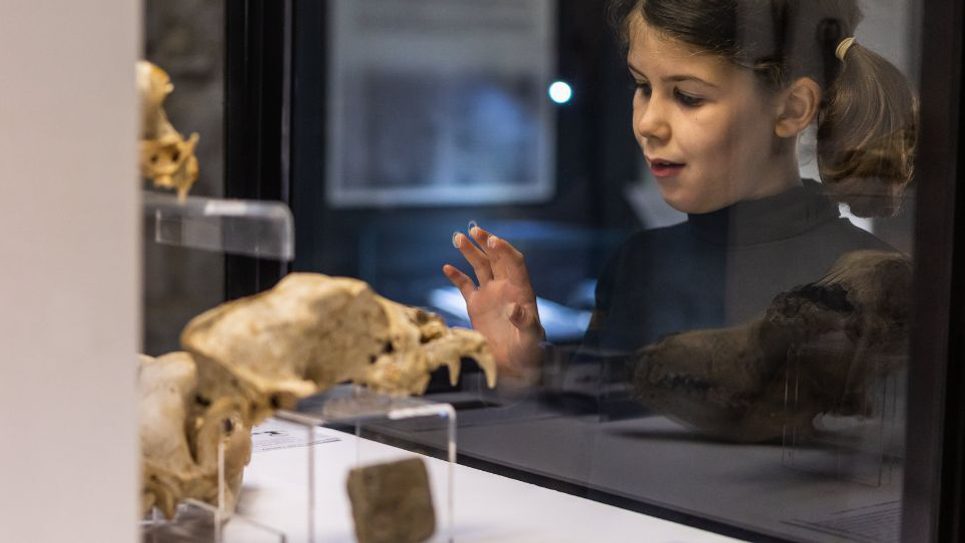
Back to Blogs
Discover
5 Reasons Why Bury St Edmunds is a Ghoulishly Good Spooky Haunted Break
1. Ghoulish Ghosts

From Medieval monks to the grey lady and from ghostly soldiers to phantom children, in haunted Bury St Edmunds there are plenty of tales and legends of hauntings to explore.
Starting with Moyse’s Hall, the oldest Norman building in the country and the second oldest building in England, you'll hear the story of the Red Barn Murderer – William Corder, whose trial, conviction and execution brought thousands to the town… onto spectral goings on at the Market Cross and then to The Nutshell pub to hear the stories of witches, mummified cats and local folklore.
As you wind your way around the darkened streets there will be stories of screaming skulls, mysterious ‘monk’ like figures appearing in cellars, burnings, hangings and more, finishing up in the dark and deserted Great Churchyard where the tour guides will recall the stories from the Abbey and the famous Grey Lady.
To discover the ghosts of Bury St Edmunds take the 90-minute Ghostly and Macabre Walking Tour with Bury St Edmunds Tour Guides. Tours start on Halloween and then continue every Friday evening until the end of March from outside Marks and Spencer on the Cornhill. Due to the content of the tour, participants must be aged 14 years or over.
2. Horrible Histories

There are so many terrible tales from the town’s history that Horrible Histories creator Terry Deary was called upon to help bring to life the Terrible Tales exhibit at Moyse’s Hall Museum.
Perhaps the most infamous of gruesome tales originating in the Bury St Edmunds area, the Red Barn Murder and the trial and execution of William Corder. Corder’s skin was used to cover a book on the trial and can be seen at the museum today along with his death mask and other gruesome exhibits including a gibbet cage.
3. Witches

For several decades, Suffolk was at the heart of numerous trials that saw the murder of multiple innocent women and men who were accused of witchcraft. The infamous witchfinder general Matthew Hopkins travelled to East Anglia in the summer of 1645, finding and bringing to trial 117 witches and wizards, though only 17 of those arrested were male.
The largest single witch trial in England took place in Bury St Edmunds and 18 people were hanged. Hopkins benefited greatly from the trials as he was paid by local parishes to seek out the accused. The public’s hysteria around the subject lead to fingers being pointed in the direction of anyone on the outskirts of society- usually single, elderly men and women.
One particularly well-known case concerned two elderly widows- Rose Cullender and Amy Denny, who were brought to trial in 1662 at the Assizes Bury St Edmunds and found guilty of 13 charges of using malevolent witchcraft. The evidence was comprised of a range of bizarre accusations including the deaths of local pigs and cattle, causing a child to vomit pins and nails and causing a toad to fall from a child’s blanket.
The trial in Bury St Edmunds had a powerful and tragic influence on the continuing persecution of witches in England and similar persecutions in the American colonies. The case became a model for, and was specifically referenced in, the Salem Witch Trials in Massachusetts, when the magistrates were looking for proof that "spectral evidence" (evidence based on dreams and visions) could be used in a court of law.
4. Spooky Streets and Buildings

There's a reason that the town's popular Ghostly and Macabre Walk ends up at the The Great Churchyard, within the shadow of The Norman Tower and next to St Edmundsbury Cathedral, it really is spooky at night.
Moyse's Hall is a 12th Century medieval building which has a rich and varied past including serving as the town's Bridewell, a workhouse, and police station. It first opened as a museum in 1899. It has been the focus of ghost tales for centuries. The oldest of these stories dates back to 1328, when a woman is recorded as saying she saw ‘a most horrible devil’ in the cellar.
The Nutshell may hold the title of smallest pub in Britain as confirmed in the Guinness Book of Records, but with ghost stories, a mummified cat and a very strange history, it could also be Britain's spookiest pub. With links to the Bury St Edmunds witch trials, hauntings, a mummified cat over the bar linked to a curse and a skeleton hand among many other unusual exhibits, there is much to view and talk about while you enjoy a drink.
The only cobbled street in the centre and the only real medieval street left in Bury St Edmunds, Skinner Street doesn’t leave too much to the imagination, as it is where animals were skinned back in the day. At night this street becomes very spooky with the tales of ghosts and eery lighting.
5. Wolves

A wolf is central to the story of St Edmund and Bury St Edmunds where legend has it that a wolf guarded St Edmund’s head after he was slain.
You can find lots of nods to the wolf that guarded Edmund all around Bury St Edmunds. A wolf guards him today in The Great Churchyard by the statue of Edmund by Dame Elisabeth Frink.
Wolves once roamed the woods of East Anglia, and their presence has leant a curious theme to our local history.
In the 1840s workmen uncovered 20 medieval wolf skulls buried near The Norman Tower in Bury St Edmunds and great mystery surrounds their significance.
Related Blogs

News
Places to sit by a roaring…
Warm up by a roaring fire this winter in Bury St…

News
Autumn in Bury St Edmunds
From pumpkins to falling leaves and from ghost stories…

News
Where to Go Pumpkin Picking…
Autumn fun, fresh air, and fields full of pumpkins in…

News
Keaton’s Batman the star in…
The iconic cowl created for Michael Keaton in Tim…

News
Autumn Theatre Guide
As the evenings draw in and autumn heads this way,…
Latest news

News
Enjoy a Festive Afternoon Tea in 2025
Celebrate the Christmas season with a festive afternoon tea in Bury St Edmunds & Beyond...

News
Festive Winter Walks
Get outside and enjoy the fresh crisp winter air with one of these walks in Bury St Edmunds and Beyond!

News
Bury Tour Guides to launch new tours next year after successful 2025
Bury St Edmunds Tour Guides to Introduce new tours in 2026 and continue the successful Food and Drink Tours!

News
New in Bury St Edmunds For 2026
A sneak peak into new attractions visitors can enjoy in Bury St Edmunds in 2026.

News
Baby It's Cold Outside... Things To Do When the Weather Turns Frosty
Just because the temperature’s dropped doesn’t mean the fun has to! If you’re visiting town during the chillier months, there’s still plenty to see, do, and experience.

News
Places to sit by a roaring fire in Bury St Edmunds & Beyond
Warm up by a roaring fire this winter in Bury St Edmunds & Beyond...

News
Christmas Park and Walk 2025
Additional parking has been provided by West Suffolk Council in partnership with Greene King this Christmas.

News
Festive Theatre Guide 2025
There’s no better way to summon the magic of the festive season than a trip to the theatre.

News
Festive Markets in Bury St Edmunds
Festive markets are set to bring seasonal cheer to Bury St Edmunds this November and December, offering the perfect chance to pick up all of your Christmas essentials!
